A migraine is characterized as a moderate to severe headache, often accompanied by nausea and sensitivity to light and sound. Nearly 1 in 4 United States households include someone who suffers from migraine. As a matter of fact, migraine is considered to be the 3rd most prevalent condition in the world. Researchers haven’t identified a definitive cause for migraines, however, several factors are believed to trigger the complex headache pain, including a misalignment in the cervical spine. Chiropractic care is a well-known alternative treatment option used to help treat migraine headaches and improve the symptoms. The purpose of the following case study is to demonstrate the effects of chiropractic care on migraine pain management.
A Case of Chronic Migraine Remission After Chiropractic Care
Abstract
- Objective: To present a case study of migraine sufferer who had a dramatic improvement after chiropractic spinal manipulative therapy (CSMT).
- Clinical features: The case presented is a 72-year–old woman with a 60-year history of migraine headaches, which included nausea, vomiting, photophobia, and phonophobia.
- Intervention and outcome: The average frequency of migraine episodes before treatment was 1 to 2 per week, including nausea, vomiting, photophobia, and phonophobia; and the average duration of each episode was 1 to 3 days. The patient was treated with CSMT. She reported all episodes being eliminated after CSMT. The patient was certain there had been no other lifestyle changes that could have contributed to her improvement. She also noted that the use of her medication was reduced by 100%. A 7-year follow-up revealed that the person had still not had a single migraine episode in this period.
- Conclusion: This case highlights that a subgroup of migraine patients may respond favorably to CSMT. While a case study does not represent significant scientific evidence, in context with other studies conducted, this study suggests that a trial of CSMT should be considered for chronic, nonresponsive migraine headache, especially if migraine patients are nonresponsive to pharmaceuticals or prefer to use other treatment methods.
- Key indexing terms: Migraine, Chiropractic, Spinal manipulative therapy
Introduction
Migraine remains a common and debilitating condition.[1, 2] It has an estimated incidence of 6% in males and 18% in females.[2] A study in Australia found the cost to industry to be an estimated $750 million.[3] Lipton et al found that migraine is one of the most frequent reasons for consultations with general practitioners, affecting between 12 million and 18 million people each year in the United States.[4] The estimated cost in the United States is $25 billion in lost productivity due to 156 million full-time work days being lost each year.[5] Recent information has suggested that these older figures above are still current, but also underestimated, because of many sufferers not stating their problem because of a perceived poor social stigma.[6]
The Brain Foundation in Australia notes that 23% of households contain at least one migraine sufferer. Nearly all migraine sufferers and 60% of those with tension-type headache experience reductions in social activities and work capacity. The direct and indirect costs of migraine alone would be about $1 billion per annum.[3]
The Headache Classification Committee of the International Headache Society (IHS) defines migraines as having the following: unilateral location, pulsating quality, moderate or severe intensity, and aggravated by routine physical activity. During the headache, the person must also experience nausea and/or vomiting, photophobia, and/or phonophobia.[7] In addition, there is no suggestion either by history or by physical or neurologic examination that the person has a headache listed in groups 5 to 11 of their classification system.[7] Groups 5 to 11 of the classification system include headache associated with head trauma, vascular disorder, nonvascular intracranial disorder, substances or their withdrawal, noncephalic infection, or metabolic disorder, or with disorders of cranium, neck, eyes, nose, sinuses, teeth, mouth, or other facial or cranial structures.
Some confusion relates to the “aura†feature that distinguishes migraine with aura (MA) and migraine without aura (MW). An aura usually consists of homonymous visual disturbances, unilateral paresthesias and/or numbness, unilateral weakness, aphasia, or unclassifiable speech difficulty.[7] Some migraineurs describe the aura as an opaque object, or a zigzag line around a cloud; even cases of tactile hallucinations have been recorded.[8] The new terms MA and MW replace the old terms classic migraine and common migraine, respectively.
The IHS diagnostic criteria for MA (category 1.2) is at least 3 of the following:
- One or more fully reversible aura symptoms indicating focal cerebral cortex and/or brain stem dysfunction.
- At least 1 aura symptom develops gradually over more than 4 minutes or 2 or more symptoms occurring in succession.
- No aura symptom lasts more than 60 minutes.
- Headache follows aura with a free interval of less than 60 minutes.
Migraine is often still nonresponsive to treatment.[9] However, several studies have demonstrated statistically significant reduction in migraines after chiropractic spinal manipulative therapy (CSMT).[10-15]
This article will discuss a patient presenting with MW and her response after CSMT. The discussion will also outline specific diagnostic criteria for migraine and other headaches relevant to chiropractors, osteopaths, or other health practitioners.
Case Report
A 72-year–old 61-kg white woman presented with migraine headaches that had commenced in early childhood (approximately 12 years old). The patient could not relate anything to the commencement of her migraines, although she believed there was a family history (father) of the condition. During the history, the patient stated that she suffered regular migraine headaches (1-2 per week) with which she also experienced nausea, vomiting, vertigo, and photophobia. She needed to cease activities to alleviate the symptoms, and she often required acetaminophen and codeine medication (25 mg) or sumatriptan succinate for pain relief. The patient was also taking verapamil (calcium ion antagonist, for essential hypertension), calcitriol (calcium uptake, for osteoporosis), pnuemenium on a daily basis, and carbamazipine (antiepileptic, neurotropic medication) twice daily.
The patient reported that an average episode lasted 1 to 3 days and that she could not perform activities of daily living for a minimum of 12 hours. In addition, a visual analogue scale score for an average episode was 8.5 out of a possible maximum score of 10, corresponding to a description of “terrible†pain. The patient noted that stress or tension would precipitate a migraine and that light and noise aggravated her condition. She described the migraine as a throbbing head pain located in the parietotemporal region and was always left-sided.
The patient had a previous history of a pulmonary embolism (2 years before treatment) and had a partial hysterectomy 4 years before treatment. She also stated she had hypertension that was controlled. She was a widow with 2 children, and she had never smoked. The patient had tried acupuncture, physiotherapy, substantial dental treatment, and numerous other medications; but nothing had changed her migraine pattern. She stated that she had never had previous chiropractic treatment. The patient also stated that she had been treated by a neurologist for “migraines†over many years.
On examination, she was found to have very sensitive suboccipital and upper cervical musculature and decreased range of motion at the joint between the occiput and first cervical vertebra (Occ-C1), coupled with pain on flexion and extension of the cervical spine. She also had significant reduction in thoracic spine motion and a marked increase in her thoracic kyphosis.
Blood pressure testing revealed she was hypertensive (178/94), which the patient reported was an average result (stage 2 hypertension using the Joint National Committee on Prevention, Detection, Evaluation, and Treatment of High Blood Pressure 7 guidelines).
Based on the IHS Headache Classification Committee classification and diagnostic criteria, the patient had an MW–category 1.1, previously called common migraine (Table 1). This appeared secondary to moderate cervical segmental dysfunction with mild to moderate suboccipital and cervical paraspinal myofibrosis.
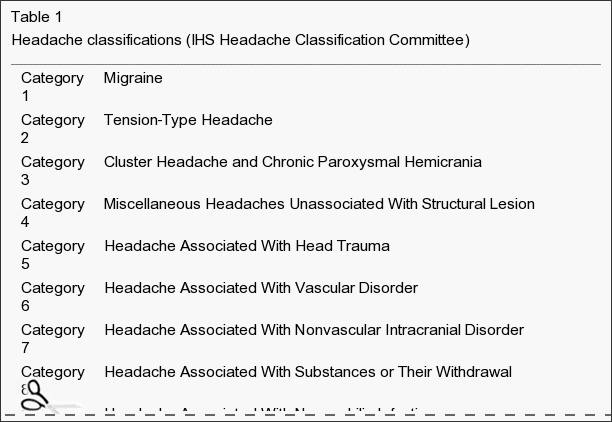
The patient received CSMT (diversified chiropractic “adjustmentsâ€) to her Occ-C1 joint, upper thoracic spine (T2 through T7), and the affected hypertonic musculature. Hypertonic muscles were released through gentle massage and stretching. An initial course of 8 treatments was conducted at a frequency of twice a week for 4 weeks. The treatment program also included recording several features for every migraine episode. This included frequency, visual analogue scores, episode duration, medication, and time before they could return to normal activities.
The patient reported a dramatic improvement after her first treatment and noticed a reduction in the intensity of her head and neck pain. This continued with the patient reporting having no migraines in the initial month course of treatment. Further treatment was recommended to increase her range of motion, increase muscle tone, and reduce suboccipital muscle tension. In addition, monitoring of her migraine symptoms was continued. A program of treatment at a frequency of once a week for a further 8 weeks was instigated. After the next phase of treatment, the patient noted much less neck tension, better movement, and no migraine. In addition, she no longer used pain-relieving medication (acetaminophen, codeine, and sumatriptan succinate) and noted that she did not experience nausea, vomiting, photophobia, or phonophobia (Table 2). The patient continued treatment at 2-weekly intervals and stated that, after 6 months, her migraine episodes had disappeared completely. In addition, she was no longer experiencing neck pain. Examination revealed no pain on active neck movement; however, a passive motion restriction at the C1-2 motion segment was still present.
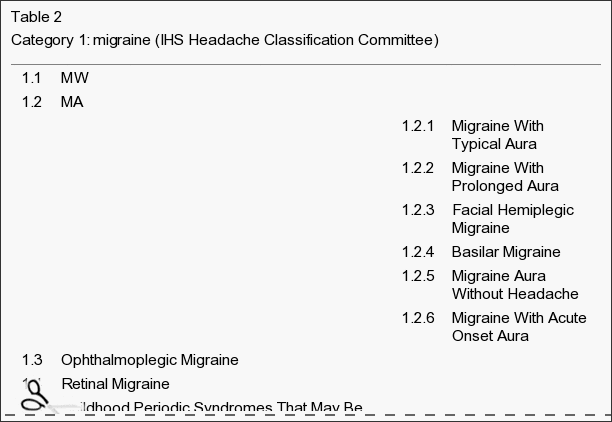
The patient is currently having treatment every 4 weeks, and she still reports no return of her migraine episodes or neck pain. The patient has now not experienced any migraines for a period of more than 7 years since her last episode, which was immediately before her having her first chiropractic treatment.
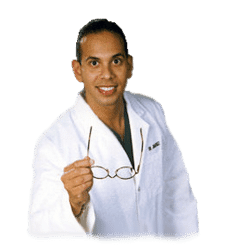
Dr. Alex Jimenez’s Insight
Migraine pain is a debilitating symptom which can be effectively managed with chiropractic care. Chiropractic treatment provides a wide selection of services which can help patients with a variety of injuries and/or conditions, including symptoms of chronic pain, limited range of motion and many other health issues. Chiropractic care can also help control stress associated with migraine. Our staff is determined to treat patients by focusing on the source of the issue rather than temporarily relieving the symptoms using drugs and/or medications. The purpose of the article is to demonstrate evidence-based results on the improvement of migraine using chiropractic care and to educate patients on the best type of treatment for their specific health issues. Chiropractic treatment offers relief from migraine pain as well as overall health and wellness.
Discussion
Case studies do not form high levels of scientific data. However, some cases do present significant findings. For example, cases with long (chronic) and/or severe symptomatology can highlight alternative treatment options. With case studies such as this, there is always a possibility that the symptoms spontaneously resolved, with no effective from the treatment. The case presented highlights a potential alternative treatment option. A 7-year follow-up revealed that the person had still not had a single migraine episode in this period. The patient was certain that there had been no other lifestyle changes that could have contributed to her improvement. She also noted that the migraines had stopped after her first treatment.
The average frequency of her migraines before treatment was 1 to 2 per week, with episodes that always included nausea, vomiting, photophobia, and phonophobia. In addition, the average duration of each episode was 1 to 3 days before her receiving CSMT. The person also noted that the use of her pain-relieving medication was also reduced by 100% (Table 3).
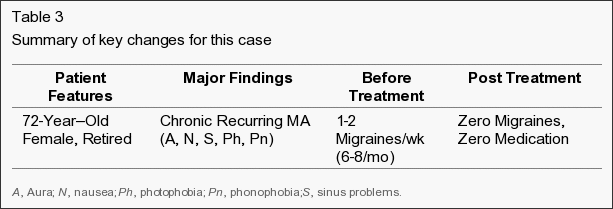
Migraines are a common and debilitating condition; yet because they have an uncertain etiology, the most appropriate treatment regime is often unclear.[16] Previous etiological models described vascular causes of migraine, where episodes seem to be initiated by a decreased blood flow to the cerebrum followed by extracranial vasodilation during the headache phase.[8] However, other etiological models seem connected with vascular changes related to neurologic changes and associated serotonergic disturbances.[9] Therefore, previous treatments have focused on pharmacological modification of blood flow or serotonin antagonist block.[17]
Studies examining the role of the cervical spine to headache (ie, “cervicogenic headacheâ€) have been well described in the literature.[18-30] However, the relation of the cervical spine to migraine is less well documented.[10-15] Previous studies by this author have demonstrated an apparent reduction in migraines after CSMT.[10, 11] In addition, other studies have suggested that CSMT may be an effective intervention for migraine.[14, 15] Although, previous studies have some limitations (inaccurate diagnosis, overlapping symptoms, inadequate control groups), the level of evidence gives support for CSMT in migraine treatment.[11] However, practitioners need to be critically aware of potential overlap of diagnoses when reviewing migraine research or case studies on effectiveness of their treatment.[18-22] This is especially important in comparison of migraine patients who may be suitable for chiropractic manipulative therapy.[23-28]
Between 40% and 66% of patients with migraine, particularly those with severe or frequent migraine attacks, do not seek help from a physician.[29] Among those who do, many do not continue regular physician visits.[30] This may be due to patients’ perceived lack of empathy from the physician and a belief that physicians cannot effectively treat migraine. In a 1999 British survey, 17% of 9770 migraineurs had not consulted a physician because they believed their condition would not be taken seriously; and 8% had not seen a physician because they believed existing migraine medications were ineffective.[30] The most common reason for not seeking a physician’s advice (cited by 76% of patients) was the patients’ belief that they did not need a physician’s opinion to treat their migraine attacks.
The case was presented to assist practitioners making a more informed decision on the treatment of choice for migraines. The outcome of this case is also relevant in relation to other research that concludes that CSMT is a very effective treatment for some people. Practitioners could consider CSMT for migraine based on the following:
- Limitation of passive neck movements.
- Changes in neck muscle contour, texture, or response to active and passive stretching and contraction.
- Abnormal tenderness of the suboccipital area.
- Neck pain before or at the onset of the migraine.
- Initial response to CSMT.
As with all case reports, results are limited in application to larger populations. Careful clinical decision making should be used when applying these results to other patients and clinical situations.
Conclusion
This case demonstrates that some migraine sufferers may respond well with manual therapies, which includes CSMT. Therefore, migraine patients who have not received a trial of CSMT should be encouraged to consider this treatment and assess any potential response. Where there are no contraindications to CSMT, an initial trial of treatment may be warranted. Following evidence-based medicine guidelines, medical practitioners should discuss CSMT with migraine patients as an option for treatment.[31, 32] Subsequent studies should address this issue and the role that CSMT has in migraine management.
In conclusion, migraine pain is a common condition which affects a large number of the population. Although the cause of migraines is not fully understood, treatment for the complex head pain can ultimately help manage the symptoms. Chiropractic spinal manipulative therapy, or CSMT, may improve migraine in patients and may be a valuable treatment option to consider. However, further research studies are required to demonstrate further results. Information referenced from the National Center for Biotechnology Information (NCBI). The scope of our information is limited to chiropractic as well as to spinal injuries and conditions. To discuss the subject matter, please feel free to ask Dr. Jimenez or contact us at 915-850-0900 .
Curated by Dr. Alex Jimenez
1. Bigal M.E., Lipton R.B., Stewart W.F. The epidemiology and impact of migraine. Curr Neurol Neurosci Rep. 2004;4(2):98–104. [PubMed]
2. Lipton R.B., Stewart W.F., Diamond M.L., Diamond S., Reed M. Prevalence and burden of migraine in the United States: data from the American Migraine Study 11. Headache. 2001;41:646–657. [PubMed]
3. Alexander L. Migraine in the workplace. Brainwaves. Australian Brain Foundation; Hawthorn, Victoria: 2003. pp. 1–4.
4. Lipton R.B., Bigal M.E. The epidemiology of migraine. Am J Med. 2005;118(Suppl 1):3S–10S. [PubMed]
5. Lipton R.B., Bigal M.E. Migraine: epidemiology, impact, and risk factors for progression. Headache. 2005;45(Suppl 1):S3–S13. [PubMed]
6. Stewart W.F., Lipton R.B. Migraine headache: epidemiology and health care utilization. Cephalalgia. 1993;13(suppl 12):41–46. [PubMed]
7. Headache Classification Committee of the International Headache, Society Classification and diagnostic criteria for headache disorders, cranial neuralgias and facial pain. Cephalgia. 2004;24(Suppl. 1):1–151. [PubMed]
8. Goadsby P.J., Lipton R.B., Ferrari M.D. Migraine—current understanding and treatment. N Engl J Med. 2002;346:257–263. [PMID 11807151] [PubMed]
9. Goadsby P.J. The scientific basis of medication choice in symptomatic migraine treatment. Can J Neurol Sci. 1999;26(suppl 3):S20–S26. [PubMed]
10. Tuchin P.J., Pollard H., Bonello R. A randomized controlled trial of chiropractic spinal manipulative therapy for migraine. J Manipulative Physiol Ther. 2000;23:91–95. [PubMed]
11. Tuchin P.J. The efficacy of chiropractic spinal manipulative therapy (SMT) in the treatment of migraine—a pilot study. Aust Chiropr Osteopath. 1997;6:41–47. [PMC free article] [PubMed]
12. Tuchin P.J., Bonello R. Classic migraine or not classic migraine, that is the question. Aust Chiropr Osteopath. 1996;5:66–74. [PMC free article] [PubMed]
13. Tuchin P.J., Scwafer T., Brookes M. A case study of chronic headaches. Aust Chiropr Osteopath. 1996;5:47–53. [PMC free article] [PubMed]
14. Nelson C.F., Bronfort G., Evans R., Boline P., Goldsmith C., Anderson A.V. The efficacy of spinal manipulation, amitriptyline and the combination of both therapies for the prophylaxis of migraine headache. J Manipulative Physiol Ther. 1998;21:511–519. [PubMed]
15. Parker G.B., Tupling H., Pryor D.S. A controlled trial of cervical manipulation for migraine. Aust NZ J Med. 1978;8:585–593. [PubMed]
16. Dowson A.J., Lipscome S., Sender J. New guidelines for the management of migraine in primary care. Curr Med Res Opin. 2002;18:414–439. [PubMed]
17. Ferrari M.D., Roon K.I., Lipton R.B. Oral triptans (serotonin 5-HT1B/1D agonists) in acute migraine treatment: a meta-analysis of 53 trials. Lancet. 2001;358:1668–1675. [PubMed]
18. Sjasstad O., Saunte C., Hovdahl H., Breivek H., Gronback E. Cervical headache: an hypothesis. Cephalgia. 1983;3:249–256.
19. Vernon H.T. Spinal manipulation and headache of cervical origin. J Manipulative Physiol Ther. 1989;12:455–468. [PubMed]
20. Sjasstad O., Fredricksen T.A., Stolt-Nielsen A. Cervicogenic headache, C2 rhizopathy, and occipital neuralgia: a connection. Cephalgia. 1986;6:189–195. [PubMed]
21. Bogduk N. Cervical causes of headache and dizziness. In: Greive G.P., editor. Modern manual therapy of the vertebral column. 2nd ed. Edinburgh; Churchill Livingstone: 1994. pp. 317–331.
22. Jull G.A. Cervical headache: a review. In: Greive GP, editor. Modern manual therapy of the vertebral column. 2nd ed. Edinburgh; Churchill Livingstone: 1994. pp. 333–346.
23. Boline P.D., Kassak K., Bronfort G. Spinal manipulations vs. amitriptyline for the treatment of chronic tension-type headaches: a randomized clinical trial. J Manipulative Physiol Ther. 1995;18:148–154. [PubMed]
24. Vernon H., Steiman I., Hagino C. Cervicogenic dysfunction in muscle contraction headache and migraine: a descriptive study. J Manipulative Physiol Ther. 1992;15:418–429. [PubMed]
25. Kidd R., Nelson C. Musculoskeletal dysfunction of the neck in migraine and tension headache. Headache. 1993;33:566–569. [PubMed]
26. Whittingham W., Ellis W.S., Molyneux T.P. The effect of manipulation (Toggle recoil technique) for headaches with upper cervical joint dysfunction: a case study. J Manipulative Physiol Ther. 1994;17:369–375. [PubMed]
27. Jull G., Trott P., Potter H., Zito G., Shirley D., Richardson C. A randomized controlled trial of exercise and spinal manipulation for cervicogenic headache. Spine. 2002;27:1835–1843. [PubMed]
28. Bronfort G, Nilsson N, Assendelft WJJ, Bouter L, Goldsmith C, Evans R, et al. Non-invasive physical treatments for chronic headache (a Cochrane review). In: The Cochrane Library Issue 2 2003. Oxford: Update Software.
29. Dowson A., Jagger S. The UK migraine patient survey: quality of life and treatment. Curr Med Res Opin. 1999;15:241–253. [PubMed]
30. Solomon G.D., Price K.L. Burden of migraine: a review of its socioeconomic impact. Pharmacoeconomics. 1997;11(Suppl 1):1–10. [PubMed]
31. Bronfort G., Assendelft W.J.J., Evans R., Haas M., Bouter L. Efficacy of spinal manipulation for chronic headache: a systematic review. J Manipulative Physiol Ther. 2001;24:457–466. [PubMed]
32. Vernon H.T. Spinal manipulation in the management of tension-type migraine and cervicogenic headaches: the state of the evidence. Top Clin Chiropr. 2002;9:14–21.

Additional Topics: Neck Pain
Neck pain is a common complaint which can result due to a variety of injuries and/or conditions. According to statistics, automobile accident injuries and whiplash injuries are some of the most prevalent causes for neck pain among the general population. During an auto accident, the sudden impact from the incident can cause the head and neck to jolt abruptly back-and-forth in any direction, damaging the complex structures surrounding the cervical spine. Trauma to the tendons and ligaments, as well as that of other tissues in the neck, can cause neck pain and radiating symptoms throughout the human body.

IMPORTANT TOPIC: EXTRA EXTRA: A Healthier You!
OTHER IMPORTANT TOPICS: EXTRA: Sports Injuries? | Vincent Garcia | Patient | El Paso, TX Chiropractor
Post Disclaimers
Professional Scope of Practice *
The information herein on "Migraine Pain Treatment | Dr. Alex Jimenez" is not intended to replace a one-on-one relationship with a qualified health care professional or licensed physician and is not medical advice. We encourage you to make healthcare decisions based on your research and partnership with a qualified healthcare professional.
Blog Information & Scope Discussions
Our information scope is limited to Chiropractic, musculoskeletal, physical medicines, wellness, contributing etiological viscerosomatic disturbances within clinical presentations, associated somatovisceral reflex clinical dynamics, subluxation complexes, sensitive health issues, and/or functional medicine articles, topics, and discussions.
We provide and present clinical collaboration with specialists from various disciplines. Each specialist is governed by their professional scope of practice and their jurisdiction of licensure. We use functional health & wellness protocols to treat and support care for the injuries or disorders of the musculoskeletal system.
Our videos, posts, topics, subjects, and insights cover clinical matters, issues, and topics that relate to and directly or indirectly support our clinical scope of practice.*
Our office has reasonably attempted to provide supportive citations and has identified the relevant research study or studies supporting our posts. We provide copies of supporting research studies available to regulatory boards and the public upon request.
We understand that we cover matters that require an additional explanation of how it may assist in a particular care plan or treatment protocol; therefore, to further discuss the subject matter above, please feel free to ask Dr. Alex Jimenez, DC, or contact us at 915-850-0900.
We are here to help you and your family.
Blessings
Dr. Alex Jimenez DC, MSACP, RN*, CCST, IFMCP*, CIFM*, ATN*
email: coach@elpasofunctionalmedicine.com
Licensed as a Doctor of Chiropractic (DC) in Texas & New Mexico*
Texas DC License # TX5807, New Mexico DC License # NM-DC2182
Licensed as a Registered Nurse (RN*) in Florida
Florida License RN License # RN9617241 (Control No. 3558029)
Compact Status: Multi-State License: Authorized to Practice in 40 States*
Presently Matriculated: ICHS: MSN* FNP (Family Nurse Practitioner Program)
Dr. Alex Jimenez DC, MSACP, RN* CIFM*, IFMCP*, ATN*, CCST
My Digital Business Card






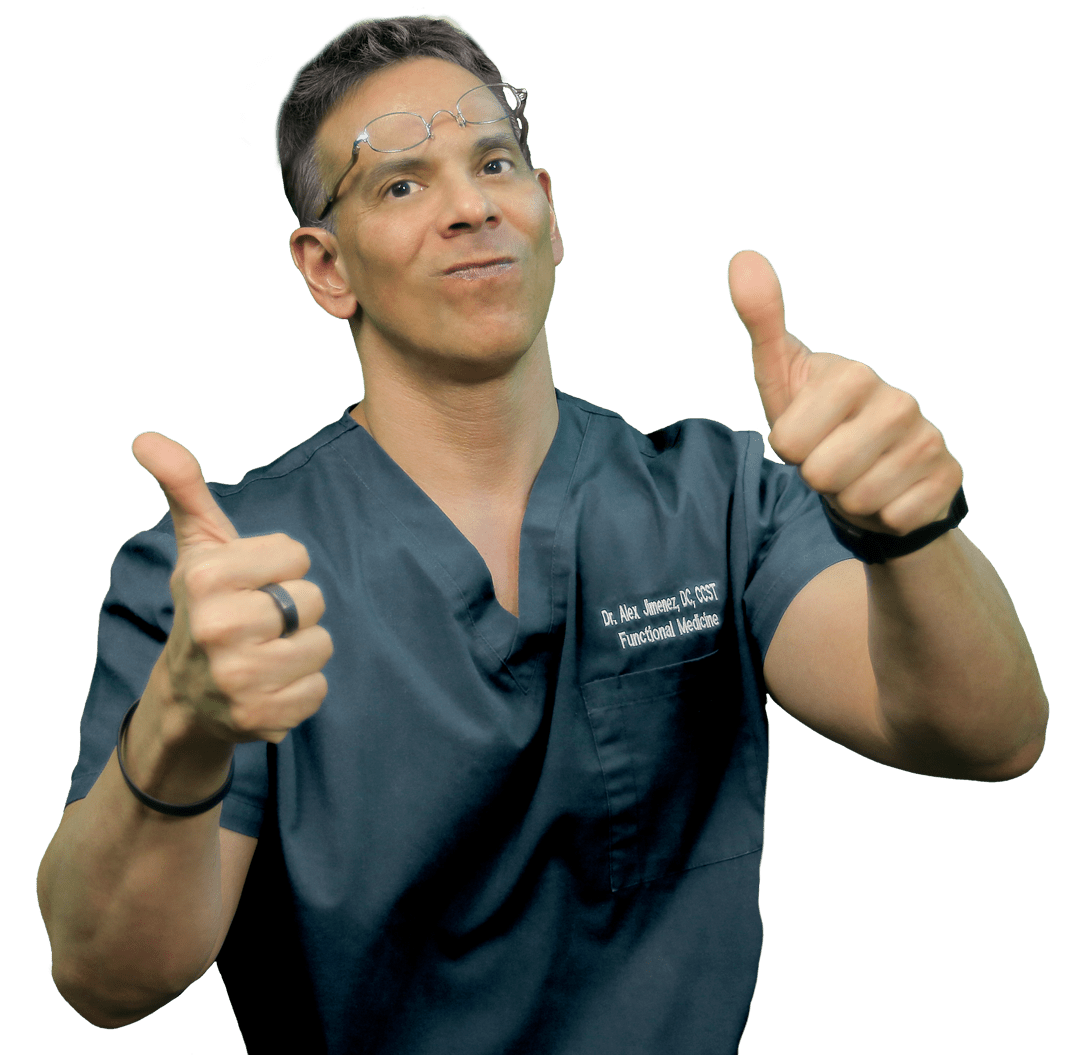 Again, I Welcome You.
Again, I Welcome You.
Comments are closed.